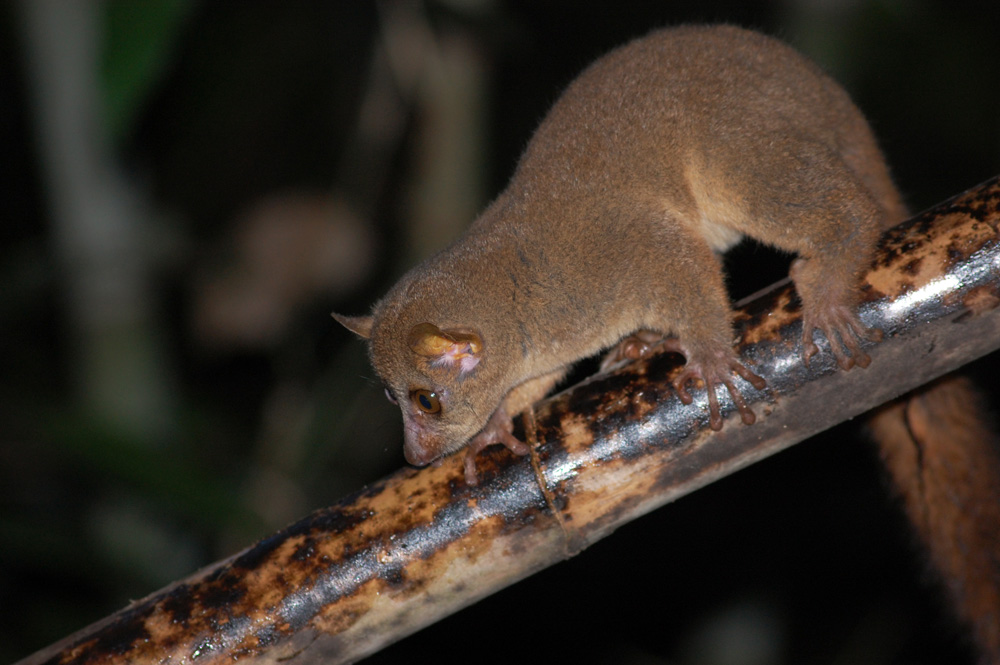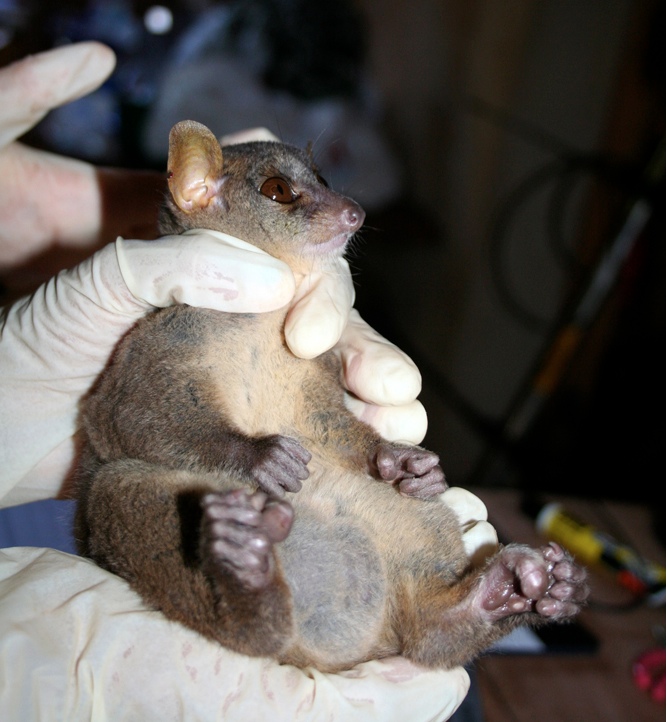Big Daddy of Primates: Lemur Has Giant Testes

A recently discovered lemur from Madagascar has the largest testes per body weight of any primate, new research finds.
If the northern giant mouse lemur were the size of a human, its testes would be as big as grapefruits, said Christoph Schwitzer, the director of conservation at the Bristol Zoological Society in the U.K.
The lemur (Mirza zaza) was first named by science in 2005, and researchers knew nothing about its diet and lifestyle — though the animal is already listed as endangered by the International Union for Conservation of Nature (IUCN).
"In order to design effective conservation measures, we need to have at least a little bit of knowledge of what we're trying to conserve," Schwitzer told Live Science. [See Images of the Northern Giant Mouse Lemur]
Testicle surprise

Graduate student Eva Johanna Rode-Margono traveled to Sahamalaza National Park in northwestern Madagascar, where northern giant mouse lemurs roam. These lemurs grow to about 11 ounces (300 grams) and are active only at night, making studying them a challenge.
"You need to be really quick following them through the forest," Schwitzer said.
Sign up for the Live Science daily newsletter now
Get the world’s most fascinating discoveries delivered straight to your inbox.
Rode-Margono captured 12 of the lemurs with live traps and fitted them with radio collars for a period of months, after which the collars were removed and the animals freed. During the capture, she also weighed the lemurs and took measurements of their testicles.
In primates, the size of the testes depends on an animal's mating strategy. Mostly monogamous animals tend to have small testes for their body size. Gorillas fit this profile. Primates with a polyamorous bent have larger testicles, reflecting their need for more sperm to outcompete other males in the mating game.
The northern giant mouse lemurs had an average testis volume of 15.48 cubic centimeters, the researchers found — eight times what would be expected in a typical lemur. It's the largest testis size relative to body size of any known primate. For comparison's sake, the average testis volume in adult humans is about 18 cubic centimeters. (The largest testis per body weight of any animal prize goes to the Tuberous bushcricket.)
Lemur lifestyle
What's more, the little lemurs also showed odd mating patterns. Most lemurs have specific breeding and birthing seasons, with only two known exceptions, the aye-aye and the red-bellied lemur, Schwitzer said. The northern giant mouse lemur makes a third exception: The animals seem to mate year-round.
The lemurs nested in groups of eight or so, which is not particularly odd. But what was strange was that these groups frequently included several unrelated males. This is rare, given the potential for conflict, Schwitzer said.
"Think about having two unrelated men in your bedroom, really," he said. "It is something that even humans don't normally do."
Rode-Margono observed only three mating sessions during her time in the forest, and darkness and vegetation made it hard to see what was going on. There was, she reported, a certain amount of sniffing and quiet "hn" noises.
More studies are needed on the intriguing reproductive behaviors of these lemurs, Schwitzer said. Madagascar is plagued by deforestation and habitat loss, and another goal is to connect forest fragments by replanting trees so that animal populations don't remain isolated.
Schwitzer and her colleagues detailed the study on June 29 in the American Journal of Physical Anthropology.
Follow Stephanie Pappas on Twitterand Google+. Follow us @livescience, Facebook& Google+. Original article on Live Science.

Stephanie Pappas is a contributing writer for Live Science, covering topics ranging from geoscience to archaeology to the human brain and behavior. She was previously a senior writer for Live Science but is now a freelancer based in Denver, Colorado, and regularly contributes to Scientific American and The Monitor, the monthly magazine of the American Psychological Association. Stephanie received a bachelor's degree in psychology from the University of South Carolina and a graduate certificate in science communication from the University of California, Santa Cruz.









